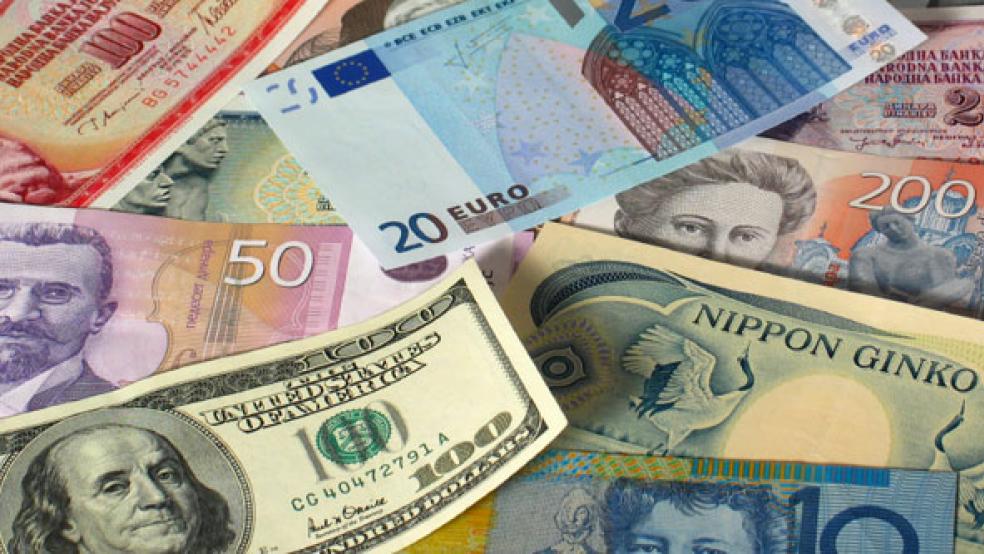Part of the tax plan President Donald Trump unveiled this week includes giving companies breaks on profits earned overseas, an idea that has provided little economic benefit in previous attempts.
The move would allow corporations to bring those earnings back home at a sharply reduced rate.
A similar effort more than a decade ago provided a nice windfall for firms, which then passed along most of it to shareholders in the form of share buybacks and dividends. The effort provided little in the way of hiring and in fact saw some of the beneficiaries actually cut payrolls.
Related: The Trouble With Trump’s Populist Tax Reform Pitch
However, Trump promised on Wednesday that the repatriation of overseas cash under his administration would yield benefits.
"By making it less punitive for companies to bring back this money, and by making the process far less bureaucratic and difficult, we can return trillions and trillions of dollars to our economy and spur billions of dollars in new investments in our struggling communities and throughout our nation," he said in a Missouri. "It's time to invest in our country, to rebuild our communities, and to hire our great American workers."
To start with, Trump's estimate is considerably higher than that of any economists who have studied the issue. The president put the figure of profits stored abroad at "anywhere from $3 trillion to $5 trillion." Economists generally put the number closer to $2.5 trillion.
Then there's the issue of what happens to that money. When then-President George W. Bush tried the idea in 2004, the results provided little economic boost.
An effort to spur hiring
When tried during the Bush years, the program was part of the American Jobs Creation Act. The hope then, as now, was that companies would shovel that money back into the economy in the form of investment and job creation.
It didn't quite work out that way.
Contrary to the intent, the benefits skewed toward a select few companies in a select few industries.
"While empirical evidence is clear that this provision resulted in a significant increase in repatriated earnings, empirical evidence is unable to show a corresponding increase in domestic investment or employment," the Congressional Research Service, Congress' nonpartisan think tank, said in a report.
The think tank cited a series of reports into the benefits of repatriation, with a common theme that the 2004 program was "an ineffective means of increasing economic growth."
How it worked
In the 2004 case, 9,700 companies were eligible to take part in a tax holiday that would bring the overseas cash back at a rate of 5.25 percent, well below the 35 percent rate for profits earned abroad.
Of that group, 843 companies participated. They brought home $312 billion in qualified earnings, or about one-third of the total cash held overseas, according to the CRS. That translated into total deductions of $265 billion.
For certain industries and companies, the program worked out nicely.
Five companies — Pfizer, Merck, Hewlett-Packard, Johnson & Johnson and IBM — accounted for 28 percent, or more than a quarter, of total repatriations. The top 15 tax holiday beneficiaries accounted for 52 percent of the total benefit.
Moreover, the pharmaceutical and medicine industry alone accounted for 32 percent of the total, and combined with the computer and electronic equipment sector to make up fully one-half of the repatriated cash.
Jobs slashed
From 2005 to 2006, Pfizer, which repatriated $37 billion, slashed 10,000 jobs. Merck, which brought back $15.9 billion, cut 7,000 jobs, and HP pared its employment rolls by 14,500 after repatriating $14.5 billion.
Most of the money went to repairing balance sheets and rewarding shareholders, according to the CRS. According to one study cited, as much as 91 cents on the dollar went to share repurchases, even though that, along with compensation increases, was expressly prohibited by Congress.
Prohibited uses for the cash weren't easy to track because the money ended up being commingled with other corporate funds.
The study said one of the biggest faults was that the permitted uses were "overly generous" and not "explicitly linked to specific uses."
Few details yet from White House
Though Wednesday wasn't the first time an administration official discussed repatriation, full details of the plan have yet to be released. Trump hasn't said, for instance, whether there would be strings attached to how the cash would be used.
He did, though, offer a broad promise of community benefits.
"My administration is embracing a new economic model. It's called very simply: The American Model. Under this system, we will encourage companies to hire and grow in America, to raise wages for American workers, and to help rebuild our American cities and communities," Trump said. "That is how we will all succeed and grow together, as one team, with one shared sense of purpose, and one glorious American destiny."
The White House also did not specify what the repatriation rate will be.
"It will be a very competitive rate that will bring back trillions of dollars," Treasury Secretary Stephen Mnuchin said at a news conference earlier this year when he and Trump's chief economic advisor, Gary Cohn, initially rolled out the repatriation plan, again without much detail.
They did stress that the tax holiday will be a one-time event.
If companies believe additional repatriation moves will come, they often are tempted to hold onto their cash in hopes of getting further breaks in the future.
In fact, the CRS report said overseas corporate profits actually swelled after the 2004 holiday.
"Simply put, the more the repatriated earnings are used to shore up a corporation's balance sheet or paid to shareholders, the less the stimulative effect of the repatriations," the report said.
This article originally appeared on CNBC. Read more from CNBC:
* Jamie Dimon: US 'should acknowledge our problems and fix them'




